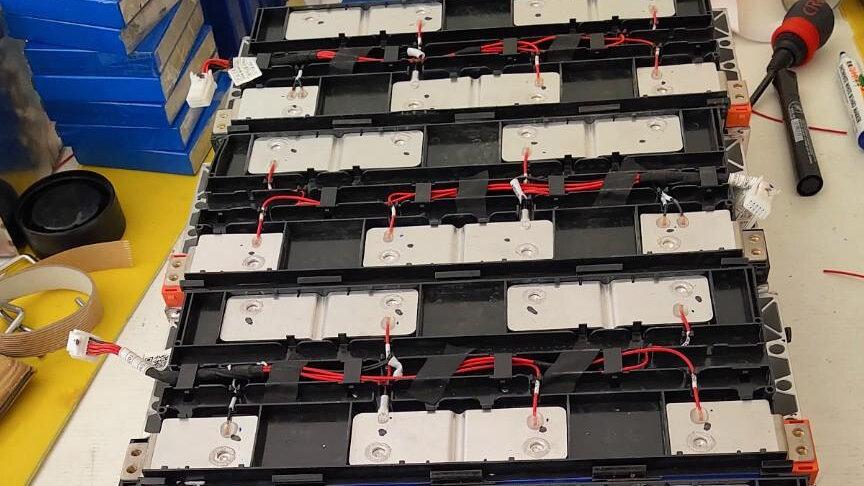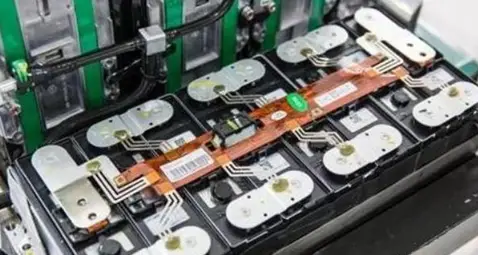Batteries in Series vs Parallel: Which is Better?
When it comes to configuring batteries for your specific needs, understanding the differences between wiring batteries in series and parallel is crucial. Each method has its own advantages and applications, and selecting the right configuration can significantly impact the performance and efficiency of your electrical systems. In this comprehensive guide, we will explore the nuances of both setups, offering detailed insights to help you make an informed decision.
Important Considerations
Premises for Battery Configuration Selection
- Application Requirements: Determine whether your application needs higher voltage or greater capacity.
- Battery Uniformity: Ensure all batteries used are of the same type, voltage, and capacity.
- Safety Measures: Implement appropriate safety protocols to prevent overcharging, overheating, and other potential risks.
Key Characteristics of Series and Parallel Configurations
- Series Configuration: Increases voltage while maintaining the same capacity.
- Parallel Configuration: Increases capacity while maintaining the same voltage.
Understanding Battery Configurations
Before diving into the specifics of series and parallel configurations, it is essential to grasp the basic concepts of battery connectivity. Batteries can be connected in multiple ways to achieve different voltage and capacity outcomes. The two most common configurations are:
- Series Configuration: Connecting batteries end-to-end to increase voltage.
- Parallel Configuration: Connecting batteries side-by-side to increase capacity.
Batteries in Series

Connecting batteries in series involves linking the positive terminal of one battery to the negative terminal of the next. This arrangement effectively adds the voltage of each battery while maintaining the same capacity (ampere-hours, Ah).
Key Characteristics:
- Increased Voltage: The total voltage is the sum of all individual battery voltages.
- Constant Capacity: The overall capacity remains the same as a single battery.
- Application: Ideal for applications requiring higher voltage, such as electric vehicles and power tools.
Example of Series Configuration:
- If you connect four 12V batteries in series, the total voltage will be 48V (12V + 12V + 12V + 12V), while the capacity will remain at the level of a single battery.
How to Connect 2 Batteries in Series
To connect two batteries in series:
- Connect the positive terminal of the first battery to the negative terminal of the second battery.
- The remaining free terminals (negative of the first battery and positive of the second) will be used to connect to your device.
This method ensures that the voltage is doubled while the capacity remains the same.
Batteries in Parallel

In a parallel configuration, batteries are connected by linking all the positive terminals together and all the negative terminals together. This setup increases the total capacity while keeping the voltage the same as a single battery.
Key Characteristics:
- Increased Capacity: The total capacity is the sum of all individual battery capacities.
- Constant Voltage: The overall voltage remains the same as a single battery.
- Application: Suitable for applications requiring longer run times, such as solar power systems and uninterruptible power supplies (UPS).
Example of Parallel Configuration:
- If you connect four 12V batteries in parallel, the total capacity will be the sum of all batteries’ capacities, e.g., if each battery has a capacity of 100Ah, the total will be 400Ah (100Ah + 100Ah + 100Ah + 100Ah), while the voltage remains at 12V.
How to Wire Batteries in Parallel
To wire batteries in parallel:
- Connect all the positive terminals together.
- Connect all the negative terminals together.
- Use the combined positive and negative terminals to connect to your device.
This configuration ensures increased capacity without changing the voltage.
Advantages and Disadvantages
Series Configuration Pros and Cons
Pros:
- Higher Voltage Output: Ideal for devices requiring higher voltage.
- Simpler Wiring: Easier to manage in systems where high voltage is needed.
Cons:
- Uniform Capacity Requirement: All batteries must have the same capacity and charge state.
- Overcharging Risk: Potential risk if batteries are not uniformly charged.
Parallel Configuration Pros and Cons
Pros:
- Extended Run Time: Increased capacity means longer usage time.
- Redundancy: If one battery fails, others can still function.
- Scalability: Easy to add more batteries to increase capacity.
Cons:
- Complexity in Charging: Requires careful management to ensure equal charging of all batteries.
- Increased Weight and Space: More batteries mean more space and weight considerations.
Daisy Chain Batteries: Combining Series and Parallel
In some cases, it might be beneficial to combine both series and parallel configurations, known as daisy chaining. This method can provide both higher voltage and increased capacity.
Example of Daisy Chaining:
- Connect two pairs of 12V batteries in series to get two sets of 24V.
- Then connect these two sets in parallel to achieve a configuration that provides 24V with increased capacity.
This setup can be particularly useful in applications like renewable energy systems where both high voltage and extended run time are required.
Wiring Batteries in Parallel Danger
While wiring batteries in parallel offers numerous benefits, it is not without risks. Wiring batteries in parallel danger primarily revolves around the potential for unequal charging and discharging, which can lead to overheating and even battery failure.
Safety Tips:
- Use Identical Batteries: Ensure all batteries have the same voltage and capacity.
- Regular Maintenance: Check connections and battery health regularly.
- Use Battery Management Systems (BMS): Implement BMS to monitor and balance the charge.
Question and Answer Section
What is the difference between series and parallel battery configurations?
Series battery configurations increase the total voltage by adding the voltages of each battery, while the capacity remains the same. Parallel battery configurations increase the total capacity by adding the capacities of each battery, while the voltage remains the same.
How do I decide whether to use a series or parallel battery setup?
The decision depends on your specific application needs. Use a series configuration if you require higher voltage and a parallel configuration if you need more capacity or longer run times.
Can I combine series and parallel configurations?
Yes, combining series and parallel configurations, also known as daisy chaining, can provide both higher voltage and increased capacity, making it suitable for applications like renewable energy systems.
What are the risks of wiring batteries in parallel?
The main risks of wiring batteries in parallel include unequal charging and discharging, which can lead to overheating and battery failure. It is important to use identical batteries and implement a Battery Management System (BMS) to mitigate these risks.
How do I connect batteries in series?
To connect batteries in series, link the positive terminal of one battery to the negative terminal of the next. Continue this pattern, and the remaining free terminals will connect to your device, providing increased voltage while maintaining the same capacity.
How do I wire batteries in parallel?
To wire batteries in parallel, connect all the positive terminals together and all the negative terminals together. This configuration will increase the total capacity while keeping the voltage the same as a single battery.
What are the applications of series and parallel battery configurations?
Series configurations are ideal for applications requiring higher voltage, such as electric vehicles and power tools. Parallel configurations are suitable for applications needing longer run times and higher capacity, like solar power systems and uninterruptible power supplies (UPS)
Conclusion
hoosing between series and parallel configurations depends on your specific needs. If your application demands higher voltage, a series configuration is the way to go. However, if you require longer run times and higher capacity, a parallel setup is more suitable. In some cases, a combination of both configurations can provide the optimal solution
By understanding the characteristics, advantages, and potential risks of each configuration, you can make an informed decision that maximizes the efficiency and performance of your electrical systems. Whether you’re working on a solar power system, or any other application, the right battery configuration can make all the difference.
With this comprehensive guide, we hope you are well-equipped to choose the best battery setup for your needs. Remember to consider your application’s specific requirements and always prioritize safety and proper battery management.




